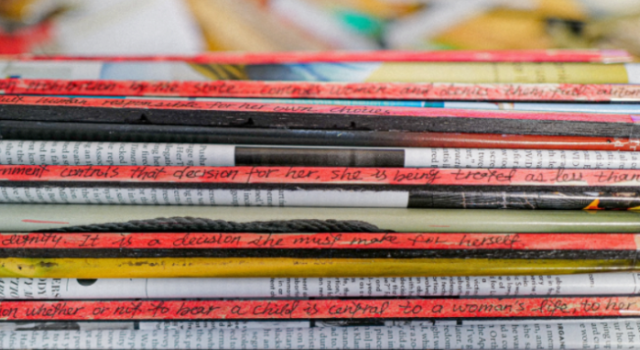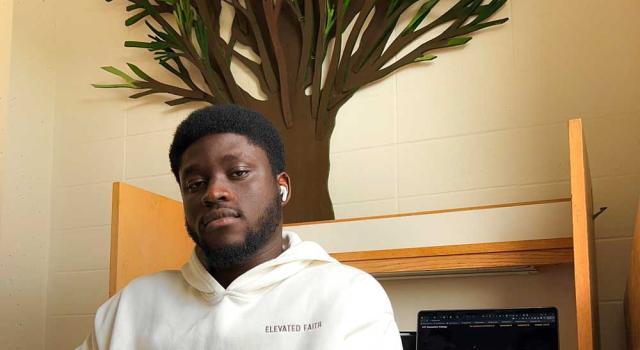Sensenich Examines Native American History and its Absence from U.S. Schools
Division III Committee: Professors Jennifer Hamilton and Sandra Matthews
Academic Intersections: Photography, Anthropology
Funding: Sander Thoenes Grant
"I studied abroad in Australia, and one day I was in a class called Aboriginal Australia. A student said, 'Before this class, I didn’t even know what an Aboriginal person looked like, or that they existed.'
At that moment, I thought, Native American history really isn’t taught in American school systems, either. It was an aha! moment for me. I decided, This is something I need to bring back to Hampshire, I wanted to start writing about what I’d been learning.
I started by trying to answer the question, Why is this subject not taught in U.S. schools? I interviewed self-identified Native American students from colleges all over the country. Some were friends, some peers, and some I met through others. I wanted to hear the stories of students themselves, so I interviewed and photographed them. I wanted to get a wide perspective of voices. I wanted to show that everyone’s voice is different, that there is no specific native identity I can talk to at all, especially as a non-native person myself. That was really important to me.
I did archival research, at Dartmouth College, at the Pequot Museum in Connecticut, and at the Abbey Museum in Maine. Amherst College has an amazing collection of Native American literature now. There’s the Five Colleges Native American Indigenous Studies Program here, which is great. Here at Hampshire, I worked with Decolonizing Indigenous Generations (DIG), a student group that’s been doing great workshops and speeches.
The Sander Thoenes Grant provided me the opportunity to travel, produce quality prints, and exhibit my work.
There’s a long history of willful ignorance in the non-native community, of not learning Native American history. I want to keep doing this work, exposing audiences to this, especially middle school and high school children. I hope my work will encourage conversations about Indigenous rights and the pernicious continuance of colonialism."
From Sandra Matthews: Jennifer was passionate about the need for people to be more aware of the painful history of Native people in the United States and the issues faced by Native people today. At the same time, she was very careful not to impose her own ideas. By getting to know contemporary Native students—her peers—and making collaborative photographic portraits with them, she opened up a dialogue she could share. The experience of working with Jennifer on this project increased my own awareness of the contemporary presence of Native people and the issues they face. As she worked, Jennifer became progressively more aware of how “invisible” Native people can be; her research and photography drew important attention to their presence.
For more of Jennifer's work, see her website.



